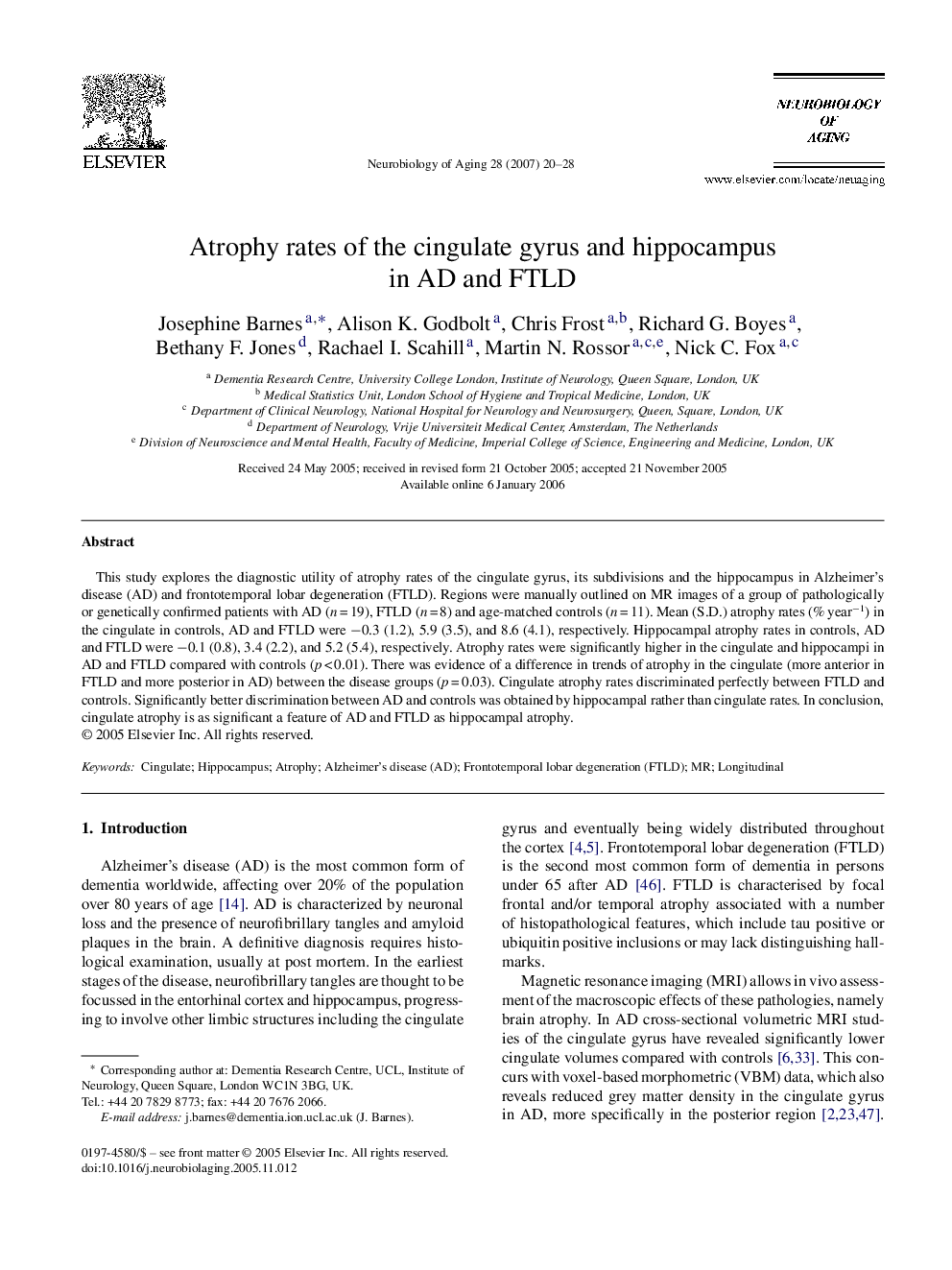| Article ID | Journal | Published Year | Pages | File Type |
|---|---|---|---|---|
| 330478 | Neurobiology of Aging | 2007 | 9 Pages |
This study explores the diagnostic utility of atrophy rates of the cingulate gyrus, its subdivisions and the hippocampus in Alzheimer's disease (AD) and frontotemporal lobar degeneration (FTLD). Regions were manually outlined on MR images of a group of pathologically or genetically confirmed patients with AD (n = 19), FTLD (n = 8) and age-matched controls (n = 11). Mean (S.D.) atrophy rates (% year−1) in the cingulate in controls, AD and FTLD were −0.3 (1.2), 5.9 (3.5), and 8.6 (4.1), respectively. Hippocampal atrophy rates in controls, AD and FTLD were −0.1 (0.8), 3.4 (2.2), and 5.2 (5.4), respectively. Atrophy rates were significantly higher in the cingulate and hippocampi in AD and FTLD compared with controls (p < 0.01). There was evidence of a difference in trends of atrophy in the cingulate (more anterior in FTLD and more posterior in AD) between the disease groups (p = 0.03). Cingulate atrophy rates discriminated perfectly between FTLD and controls. Significantly better discrimination between AD and controls was obtained by hippocampal rather than cingulate rates. In conclusion, cingulate atrophy is as significant a feature of AD and FTLD as hippocampal atrophy.
